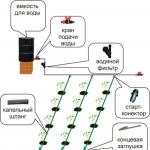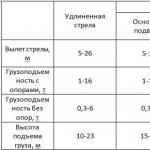The modern approach to the design of window openings with curtains is replete with a variety of models for every taste and budget. Among other options, Austrian curtains are especially popular with many buyers. What they are, where they are appropriate and what are the nuances of fitting them into the interior, we will find out together further.



Design features
Austrian curtains are curtains that originate from the 18th century, when they were invented to decorate windows closed with shutters. These are lifting panels of fabric, which are distinguished by the mechanism of lifting cords, as well as a small consumption of textiles.
In fact, they combine two types of curtains: Roman and French. From the French, they borrowed the splendor and volume of the folds, and from the Roman ones - a simple and convenient lifting mechanism.




When the curtains are in the straightened state, they are no different from ordinary rectangular panels. In this case, as a rule, one curtain is more often used on one wall. When they are raised, the rectangular panel turns into a frill of festoons. For the installation of such curtains, a rail cornice is used.
The shape of the scallops is formed by ropes passed inside the fabric through special loops. These cords are also attached to the eaves. The panel is controlled by a chain. It is pulled when windows need to be opened. Cords are the main working element of curtains, since it is their tension that determines the size of the scallops and the degree of their collection.

Style and material
By themselves, Austrian curtains cannot be called universal. Due to their shape, they gravitate towards the classical trends in interior design, which are characterized by the presence of elements of palace solemnity. No wonder such curtains have long adorned the palaces and residences of the nobility. They are still used today in such areas as classics, neoclassics, classicism. They can also decorate some ethnic interiors (for example, Italian and English styles).
However, they often fit into modern trends with difficulty, since not every modern trend needs a deliberate demonstration of luxury and the status of the owner of the house.
Of course, they will be a ridiculous spot in the design of a loft or grunge, avant-garde or minimalism.



But they can be beaten in the Arabic style, Venetian and Greek. At the same time, it is worth considering the relevance of the lining, as well as the possibility of combining it with tulle or lambrequin.
To fit them into the interior of specific rooms, you have to beat the design due to the material of manufacture. For example, a light veil or other translucent material makes the initially massive design softer. For this reason, in most cases, such products are made from light and almost weightless materials, which, in addition to the veil, include rayon and organza. Products made from silk have deep and distinct folds, in contrast to the folded veil. Chintz analogs are distinguished by a larger width of folds.



Where are they appropriate?
It should be clearly understood that these curtains, regardless of the material of manufacture, give away pomposity and always attract attention. When decorating windows with them, it is important to consider: they will not look equally good in rooms of different purposes. The opinion that they are harmonious in offices is erroneous. The office is not a place for such decor, and even the office of a male leader (such curtains give off a feminine touch).
If we talk about the rooms of an apartment or a country house, such curtains are quite suitable for decorating the living room. However, so that they do not weigh down the interior composition, they should not be repeated in the design of the doorway leading to the hall.
We must not forget about the possibility of the material to visually introduce discomfort into the perception of space. The abundance of satin or denser fabric, and even with a pattern, can spoil the design of the key room of the home.

Austrian curtains are appropriate on the windows of spacious rooms with high ceilings. With a lack of footage, they will look bulky and ugly. If you really want to hang Austrian curtains on the walls, then you should take a model made of thin fabric, which, when assembled, will give smaller and neater scallops. It is also important to pay attention to the fact that the curtains do not have any other massive decor.
If desired, you can combine such curtains with a veil in the bedroom. However, in this room, one should not forget that both the curtains themselves and their additions were made of thin fabrics. Otherwise, the bedroom may periodically resemble a theater building with massive curtains inherent in it. If you thoroughly approach the design, you can decorate the kitchen windows with Austrian curtains. However, in this case, they will not always have additional panels on the sides, which depends on the layout of a particular room.



If we talk about unusual, but possible use cases, we can not fail to note the bay window. It is here that curtains made of thin fabric, assembled into scallops, will look beautiful. But then again, if at the same time the bay window, and the room itself is spacious. When space is sorely lacking, it is better to replace this decor with roller blinds or panels on the grommets.
Such models look great on different ledges of the layout. For example, if you try, they can fit into the protruding space of a room with a window and a podium occupied by a sofa and built-in niches for various books that promote relaxation.
So that at the same time the design of the curtains does not look massive, it is worth limiting the number of scallops, using light fabric and not gathering it too tight.



Colors and patterns
The colors of Austrian curtains are varied. More often they are performed in light colors of the palette, because this is how they look elegant and do not scream about themselves. This allows you to make the color spots of the interior evenly spaced over the entire area of the room. When the curtains are bright, you have to beat their color with accessories, the tone of furniture upholstery or even wallpaper patterns.
As for the most popular tones, today they are shades of pastel colors.(beige, cream, cream, peach, milk, lilac, blue and others). Popular and light green, as well as pistachio color. Of course, the curtains can be pink, but only in the girl's room. In general, they try to choose the tones of products in such a way that they are liked by all household members.



White curtains are also in the spotlight, although they cannot be called practical. For kitchens, you can use textiles with prints on a light background. For example, unpretentious floral motifs of gray and terracotta on a white background, green pattern, contrasts of gray and light brown on a creamy base look good. The main rule of colorful curtains of the Austrian type is the dimness of the tones of the pattern, as well as their medium-sized size.
However, according to experts, it is better to give preference to monophonic models due to the already complex shape of the curtains. For example, it is these products that are harmonious in the design of bedrooms, living rooms, an office and a home library.
If you want to decorate a room with a design with a pattern, you can use materials with a combination of just two, not sharply contrasting tones of the color palette.



Tricks of choice
When ordering or buying ready-made curtains, it is worth considering such a nuance as fastening with Velcro. This is due to the design features of the curtains. Of the two types, it is the rod that is the more reliable mount, which will not suffer from either accidental sharp tension or the weight of the fabric, even if it is heavy. In addition, it is important to think over the design of the upper edge of the Austrian curtains.
For example, today a rigid textile lambrequin, fastened on both sides of the window, is in high demand. It looks more aesthetically pleasing than a wide frill, besides it gives completeness to extraordinary curtains. In order for the product to look like a single whole, the fabric of the panels and the lambrequin must be identical. This design option is appropriate in cases where the cornice is not hidden by the design of the ceiling structure.



When choosing, it is important to pay attention to textiles, its practicality in washing and durability. Knitted fabrics are not suitable for sewing these curtains, as they will sag, and in a free state they can also be deformed.
If in a particular room it is planned to hang curtains on separate and narrow windows, you can reduce the number of scallops to a minimum than combine all the windows of one wall with a single panel with scallops.
This technique can also be used when decorating a faceted bay window. For example, you can get by with one festoon for each window, hanging a separate canvas on it. Outwardly, such a design will not have massiveness: on the contrary, it will look not only easy, but also stylish. It is in this case that it is good to buy or sew Austrian curtains made of natural fabrics on your own. When the bay window has a rounded shape, it is easier to hang a single panel on its windows, forming aesthetic figured curtains from it.
Austrian curtains, being a combination of elements of French and Roman curtains, will be an ideal solution for decorating any room, whether it is a city mansion or a country house. Their underlined luxury, combined with the conciseness of the functional mechanism, makes Austrian curtains one of the most prestigious ways of decorating a window opening. According to many design textbooks, Austrian curtains are a universal decor element that will be appropriate in all stylistic directions. Despite this, many designers have a different point of view, arguing that Austrian curtains will look harmonious only in classic interiors, or in interiors. In this article we will try to figure out whose point of view is the most correct, and also tell you how to create Austrian curtains with your own hands.
The history of the emergence of Austrian curtains
Looking into the past, you can see that the fashion for Austrian curtains originated in the middle of the 18th century, which is associated with the dominant aristocratic culture, which determined the preferences of consumers.
Combining the splendor of the classics and the pragmatism of the new time, they became the most successful synthesis of two opposing styles, which contributed to their popularization in the most prestigious houses of Europe.

Austrian curtain design
The design of Austrian curtains incorporates the structural elements of Roman and French curtains.

The classic splendor of the folds and the curves formed by them make it possible to create a femininely harmonious balance, and the functional system of their regulation, represented by a lifting mechanism, dilutes the soft lines of the draperies with respectability and solidity.

A balanced combination of French opulence and Roman austerity allows Austrian curtains to be used to decorate both luxurious mansions and small-sized rooms, giving them an old-fashioned classic charm.
Austrian curtains - a universal element of decor
As mentioned above, most designers consider Austrian curtains in the interior to be a universal element of decor. This point of view has become widespread in the design world in connection with the constructive solution of curtains.

Austrian curtains are mounted on a cornice, in which devices for cords are provided, while the upper edge of the curtain is gathered with a curtain tape, and the fabric falls freely, forming soft horizontal folds. These folds are like an accordion, which is due to the slats attached to the wrong side of the curtains. When lowered, Austrian curtains are several canvases that form folds at the bottom. It should also be remembered that weighting agents are sewn into the lower part of the curtains, which give them a shape. Thus, Austrian curtains are essentially double-compression curtains that are lifted with cords.

Austrian curtain rods
Austrian curtains are fastened with the help of a profile cornice for lifting curtains, on which one half of the Velcro is provided. Its second half is sewn to the upper edge of the canvas. Austrian curtain rods are classified according to their length, weight and number of lifting blocks. Depending on the installation system, the cornices are installed directly in the window opening, on the ceiling or on the wall.

All of the above design features allow Austrian curtains to transform from decorative to functional, which makes them a versatile element of decor.

choice of fabric
The fabric used for sewing Austrian curtains also has its own characteristics.

Fabrics should be preferred elastic and wrinkle-resistant. Such materials can be dense silk, satin fabrics, moire or cambric, which have shiny surfaces and are able to form clear folds. Quite often, the choice may fall on a veil, the transparency of which gives the interior an exquisite lightness. The originality of the decor is given with the help of braid or cords, decorated with tassels, which allow you to focus on clearly defined folds.
Austrian curtains threads
Austrian thread curtains are gaining more and more popularity. They are the same Austrian curtains, consisting of threads that will surprise you with a cascade of falling waves, in which the play of light can be traced. The airiness and weightlessness of these rope curtains can impress any, even the most demanding designer, and if your task is to search for new forms and textures, then Austrian thread curtains will be your ideal choice.

Austrian curtains for the kitchen
If you decide to use Austrian curtains for the kitchen, then you should opt for soft and transparent fabrics in order to make the interior of the kitchen more elegant and not create obstacles for the penetration of light into the room.

They can also be supplemented with curtains or labrequins of a suitable color.

How to sew an Austrian curtain?
Having dealt with all the features of the curtains, it's time to answer the question: "How to sew an Austrian curtain?" As practice shows, this is not particularly difficult. If you have stocked up on material for making curtains (main fabric and lining), then you can safely proceed to sewing them.

fabric cutting and sewing

The length of the cord should be equal to the sum of the two lengths and width. Having cut out two canvases from the lining and curtain fabrics, they must be sewn right sides together along the longitudinal and bottom sections. Do not forget about the fringe, which must be sewn along the bottom edge.

ribbon preparation
The next step is to prepare a braid on which rings are sewn at a distance of at least 50 cm and no more than 80 cm.

The distance between the tapes is chosen arbitrarily. If the braid is ready, or you prefer the finished curtain braid, then it must be hemmed to the upper edge of the canvas, having previously bent it by 2 cm. After following these recommendations, pull off the finished canvas to the size of the eaves.

final stages
Then we thread the cord into the rings, tying a knot at both ends. The final step in creating an Austrian curtain will be its fastening on a wooden plank just below the curtain braid. For the braid it is necessary to hang the curtain on the eaves. The curtain is ready! Now you can start adjusting the curtains in height, and use the cords as a decorative addition. If you want your curtain to have more regular shapes, sew a weight into the bottom of the curtain that will align it according to your requirements.
Austrian curtains in the interior of the kitchen are very relevant for any design trends. After all, they combine both lush French and lifting Roman curtains, which is very important for modern people who love comfort and simplicity.
Austrian curtains
Austrian curtains are fabric hanging on a special cornice with a lifting mechanism. In the lowered and raised form, lush folds are formed along the lower edge of the Austrian, or as they are also called scallops. These curtains adopted this motif from elegant French curtains, only slightly simplified it. A modern lifting cornice allows you to adjust the level of curtains using cords threaded into rings on the canvas. Often the upper or lower part of the Austrian is decorated with fringe, lace, ruffles.

We select Austrian curtains for your kitchen
Austrian curtains are very relevant and easy to use in any interior, and they can also be combined with elongated classic curtains. When making a choice in favor of elegant curtains, their advantages should be taken into account.
- Firstly, they take up little space, which means they are suitable even for the smallest kitchenette.
- Secondly, the consumption of fabric for sewing Austrians is much less than for classic ones.
- Thirdly, when the window in the kitchen is located near the table or hob, the Viennese curtains will not interfere, as they are easy to raise and then lower.
- Fourthly, such elegant curtains will transform your kitchen and give it a presentable look.


What fabric to choose
For kitchen Austrians, it is very important that the fabric drapes easily, does not get very dirty and is just as easy to wash. For Viennese blinds, the best materials are voile, cotton, linen, chintz. These fabrics are best able to convey all the charm and tenderness of the Austrian image.
It is better to be careful about choosing a color for curtains, because the overall perception of the kitchen will depend on it. If the window is near the cooking area, then too light shades are best left for another occasion, although the curtains have a lifting mechanism, splashes from a boiling pot can get on the snow-white curtain.
For Austrian kitchen curtains, it is better to give preference to plain fabrics; for small kitchens, you should not choose too bright colors, as they will fill the entire space. Large patterns are also not appropriate for compact Viennese curtains, but a small floral pattern, polka dot, stripe or cage will come in handy.



Austrians for different styles
Although we have already said that Austrian curtains are universal and suitable for almost all styles, but for the most part this is a privilege for romantic decorations such as classic, Provence, sea coast style.
Provence
Provence is light natural fabrics of light colors. A small floral pattern, a narrow strip and a check will all be in the theme of a romantic French style. And frills, lace and ribbons will add even more charm to Austrian blinds.

Classic
Classic Austrian curtains will look elegant if they are sewn from a light silk fabric, you can put an elegant fringe or ruffle along the bottom edge, and then the severity of the classic kitchen decoration will look more mundane and mysterious.

Sea style
To bring a touch of nautical style into your urban kitchen and imagine yourself on vacation, just hang stylish Austrian curtains with a nautical theme. For this direction, the characters of the color are white, blue, turquoise, brown. A classic option is white Austrians with blue stripes.
Ever since the Austrian curtains first appeared in the mansions and palaces of the Austrian elite in the 18th century, and up to our time, interest in them has not faded. And if earlier only dukes and counts could afford to have such luxury at home, then over time the situation has changed, and today you can meet them in almost any room. Moreover, sewing Austrian curtains is not so difficult, and you can even cope with this task on your own.
A bit of history
This type of window decoration appeared as a result of the merger of two types of curtains that were popular at that time - French And Roman. From the first, the "Austrian" inherited lush folds in the lower part of the canvas, from the second - the lifting mechanism. Thus, the Austrian curtains did not look as pompous as the awnings fashionable in the 18th century, but at the same time it was noticeable and representative enough that they could decorate the windows in the houses of the Viennese aristocrats. Initially, this type of curtain was called scalloped because of the scalloped folds formed during the rise.




Character traits
The Austrian curtain is a rectangular piece of fabric, to the wrong side of which special rings are sewn. They are attached to the fabric along vertical lines, the distance between which is selected in accordance with the size of the window. Then special strong and thin cords are passed into the rings, which will lift the curtains.



When lifted, the cords tighten the fabric, causing the fabric to gather into folds. Usually, when unfolded, the curtain becomes completely flat.


















